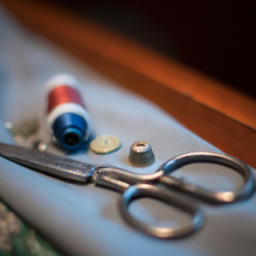
History of Sewing Machine
The sewing machine has transformed the way clothes and textiles are manufactured, making sewing faster, more efficient, and accessible to people worldwide. The history of the sewing machine is an interesting tale of innovation, perseverance, and revolution in the textile industry.
The Invention of the Sewing Machine
The first functional sewing machine was invented by French tailor Barthelemy Thimonnier in 1830. This machine used a hooked needle and a single thread to create a chain stitch. Thimonnier received a patent for his invention and started a small factory to produce sewing machines.
However, Thimonnier’s sewing machine faced strong opposition from French tailors, who saw it as a threat to their livelihood. A mob of tailors destroyed his factory, forcing him to flee to England. Despite these setbacks, Thimonnier’s invention paved the way for further developments in sewing technology.
Revolutionary Improvements
In the following years, various inventors worked on improving sewing machines. In 1846, American inventor Elias Howe patented the first practical sewing machine that used two threads and created a lockstitch, similar to modern machines.
Isaac Singer, another American inventor, made significant contributions to the sewing machine’s design. In 1851, he introduced the foot treadle, which allowed the machine to be powered by foot instead of hand, making sewing even more efficient.
Mass Production and Industrialization
The true revolution in the textile industry occurred with the introduction of the sewing machine into mass production. In the mid-1850s, several companies started manufacturing sewing machines on a large scale.
One of the most influential manufacturers at that time was the Singer Sewing Machine Company. Isaac Singer’s innovative marketing techniques, such as installment payment plans, helped popularize sewing machines among households in the United States and eventually worldwide.
Modern Sewing Machines
Over the years, sewing machines have undergone numerous improvements and technological advancements. From mechanical machines to computerized ones, sewing technology has continued to evolve.
In the late 20th century, computer-controlled sewing machines were introduced, enabling precise stitching and automation of complex designs. These machines came equipped with LCD screens, stitch pattern selections, and advanced features like automatic thread cutters and needle threaders.
Impact on Society
The invention and widespread use of sewing machines have had a profound impact on society. With the ability to produce clothing and textiles quickly and efficiently, the sewing machine played a vital role in the industrial revolution and the development of mass production.
Sewing machines also empowered individuals to create their own garments, leading to the growth of the fashion industry and the democratization of fashion. Today, sewing machines are used not only in garment factories but also in households, allowing people to explore their creativity and save money by making their own clothes.
In conclusion, the history of the sewing machine is a testament to human ingenuity and the impact of innovation on society. From its humble beginnings to the sophisticated machines we have today, the sewing machine has revolutionized the textile industry and continues to be an essential tool in homes and factories worldwide.




